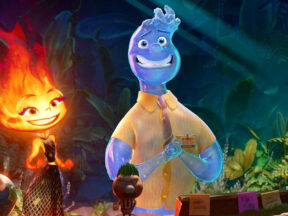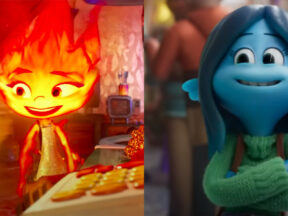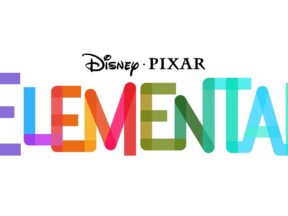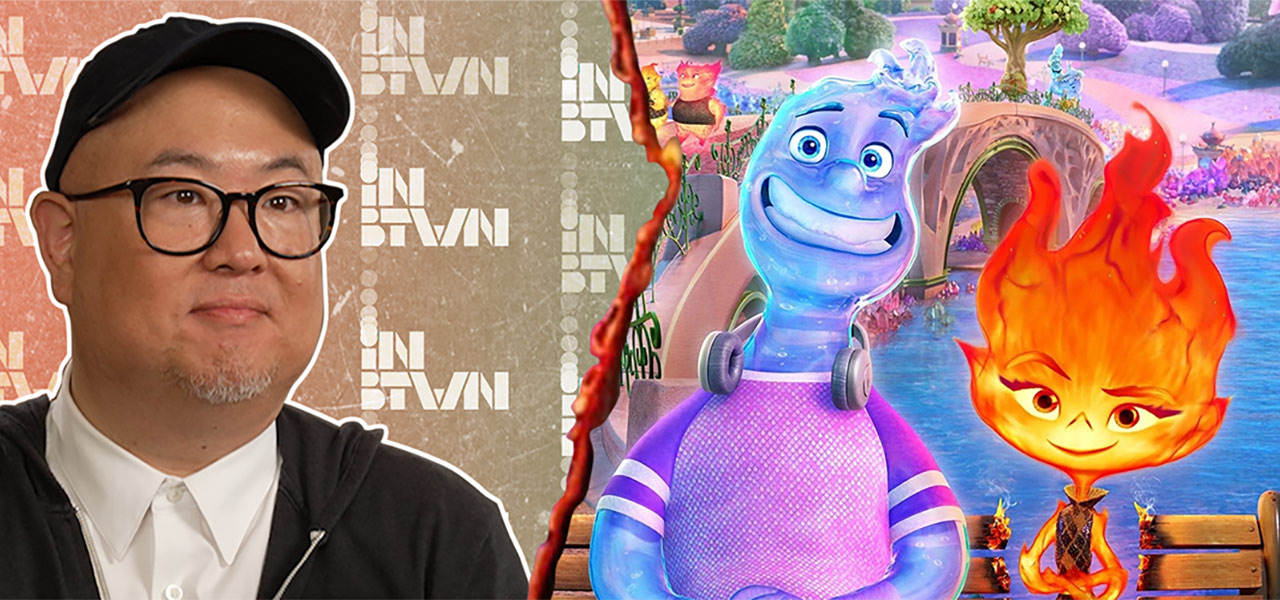
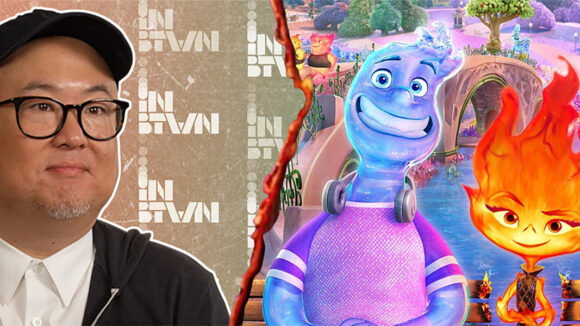
Peter Sohn Explains How ‘Elemental’ Evolved From A Superhero Vs. Villains Story To Something More Personal (Video Interview)
Director Peter Sohn has done almost every job imaginable at Pixar during his 23 years with the company. His latest credit is as the director of Elemental, in theaters now.
Last week, the film had a special screening at Annecy, where IBTWN Animation, in partnership with Cartoon Brew, caught up with Sohn to discuss one of the most personal projects he’s ever worked on.
Narratively, the “seeds” of Elemental came from his own upbringing as the child of Korean immigrants living in New York City. But seeds can’t grow on their own, so Sohn spoke with hundreds of people at Pixar who had immigration stories of their own to help give his seeds the elements they needed to grow.
“That [idea] began to resonate with artists from different departments and they started bringing their own stories. I love that it started with these personal seeds, but other stories grew from that, and it became all of us,” he said.
As the film was being developed, it went through several big narrative changes. Sohn knew the kind of story he wanted to tell, but there was still work to be done to nail down the specifics. Early versions had villains, but Sohn says that turned it into basically another superhero movie, and that’s not the kind of story his team was trying to tell.
“Anytime we started abstract, the audience at Pixar every time we showed it, the characters are abstract and once we went to a narrative that was abstract, there was really nothing to latch onto,” he told us. “So we had to find some grounded things to play off of. Some early versions of that were almost superhero movies essentially, with fire powers and water powers to stop a villain. But you didn’t feel anything. So we were just searching for that connection with the elements.”
In their search for a connection, Sohn recalls seeing concept art with Ember represented as a candle flame that shrank when she felt vulnerable. “It reminded me when you’re with someone and you’re naked emotionally, if they said a negative word to you, you’d just be crushed.”
From there, it became about visual metaphors between elemental actions and human emotions. “Maybe it’s too subtle, I don’t know, but it was something that felt real versus a villain that was in a cliché way taking over a city,” said Sohn.
Sohn had an idea but needed a way to visualize that through animation. The roots of using anthropomorphic elements as characters to tell a story came from Sohn’s childhood.
“In school, when I first saw the periodic table of elements, they looked like apartment complexes to me and I would draw characters,” he said. “There were jokes, like, ‘Copper lives next to helium but be careful because they’re gassy!’ But that’s all it was, it was never anything else.”
The film unspools as a romantic comedy that follows Ember and Wade, two young elements living in a city where fire, water, land, and air-residents live side by side. The film’s larger themes are based on Sohn’s own upbringing as a child of immigrants in New York City.
It’s one thing to have an idea about anthropomorphizing the four classical elements as characters, and another thing altogether to make it happen on screen. Sohn said it took a bit of naïveté and a lot of determination to make it happen, as well as the help of a ton of people at Pixar.
“There was a lot of fear and advice of what the problems were gonna be,” he recalled of his initial pitch to use elements as characters. “Part of me was naïve and part of me was excited because we couldn’t find an example of characters like this outside of 2d drawings, like Calcifer from Howl’s Movie Castle.”
Sohn said that one of the biggest challenges to using elemental characters was, “We wanted them to emote in a human way, but they couldn’t be a human in terms of a skeleton.”
“It all started with drawings and after that, it was just years of experiments,” he explained. “There was no road. We had roads to toys… to building cars,” he explained, alluding to the characters in Toy Story and Cars. “But we didn’t have roads to building characters that were all effects.”
Pixar recently published several detailed technical papers on how they achieved some of the film’s special effects, and many of the technical crew who made it possible will be speaking at upcoming industry events. But Sohn thinks the average moviegoer probably won’t fully realize just how much went into making those moving pictures possible.
“When you look at it, it’s like ‘Oh they just turned something on.’ But it was years of trying to build a road in that studio with a lot of people really working hard to see if they could control the fire. So much of it was about trying to slow and control it without the audience saying, ‘Oh, that’s not fire anymore’” he said.
And as difficult as it was to figure out how to create a character made of fire, even more work was required to get the film’s water characters to function on screen.
“Water was the hardest because any movement of the ingredients of water, it would turn into something else,” Sohn explained. “You slow down the bubbles he becomes Jell-O. If you remove highlights, he becomes a ghost.”
For more insights on the production of the film, check out the entire INBTWN interview, linked above.

